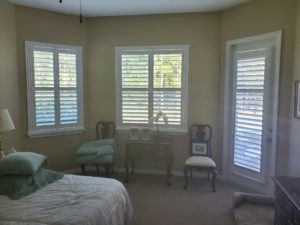
 More often than not, all-natural wooden furniture is going to be a bit more on the price side when compared to similar pieces made from different materials. This is because wood is a scarce material, and is often reflected in its price, similar to other rare materials like marble. Yet if someone wants wooden window shutters and cannot afford them there are other options to consider such as faux wood shutters. Tampa residents should know that this material is not all-natural hardwoods, but it looks just like the real thing. This is good considering how much cheaper faux wood shutters can be when compared to all-natural wooden shutters.
More often than not, all-natural wooden furniture is going to be a bit more on the price side when compared to similar pieces made from different materials. This is because wood is a scarce material, and is often reflected in its price, similar to other rare materials like marble. Yet if someone wants wooden window shutters and cannot afford them there are other options to consider such as faux wood shutters. Tampa residents should know that this material is not all-natural hardwoods, but it looks just like the real thing. This is good considering how much cheaper faux wood shutters can be when compared to all-natural wooden shutters.
Why Faux Wood Shutters are Cheaper
If faux wooden shutters look and feel similar to real wooden shutters, many people wonder why they are often cheaper than the real thing. The short answer is because there is little to no wood that is actually being used in faux wood shutters. Tampa residents should be made aware that the two most common types of materials that are used to make these shutters are hollow core PVC shutters that have particle boards that simulate the look and feel of real wood. This particle board is often dressed up to look more like wood grain to complete the feel of having wood furniture in your home.
Do Faux Wood Shutters Warp or Break Like Traditional Wooden Shutters?
All-natural hard wood furniture is susceptible to home and environmental changes. This includes fulguration in the temperature of the house, how much sunlight is coming into contact with the shutters, and even the humidity in the area. But these factors are not really going to affect faux wood shutters. Tampa residents should know that this can save them a lot of money in the long run that they would have to spend on making sure their all-natural wooden shutters are kept in a great looking position. Faux wooden window shutters can last fifteen or more years if they are taken care of properly.
*Disclaimer: The views expressed here are those of the authors and do not necessarily represent or reflect the views of Shutter Professionals*

